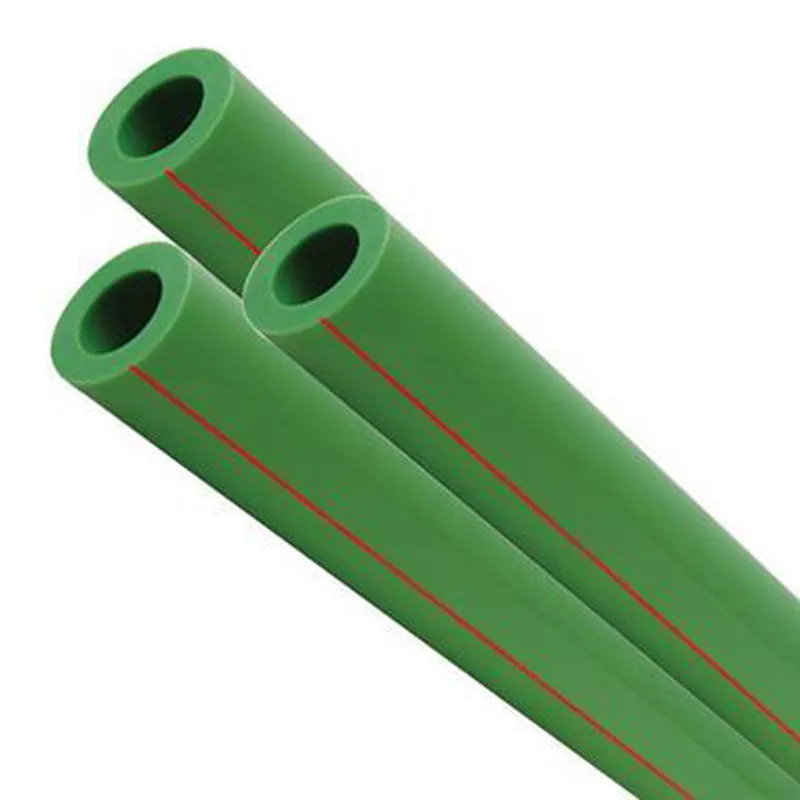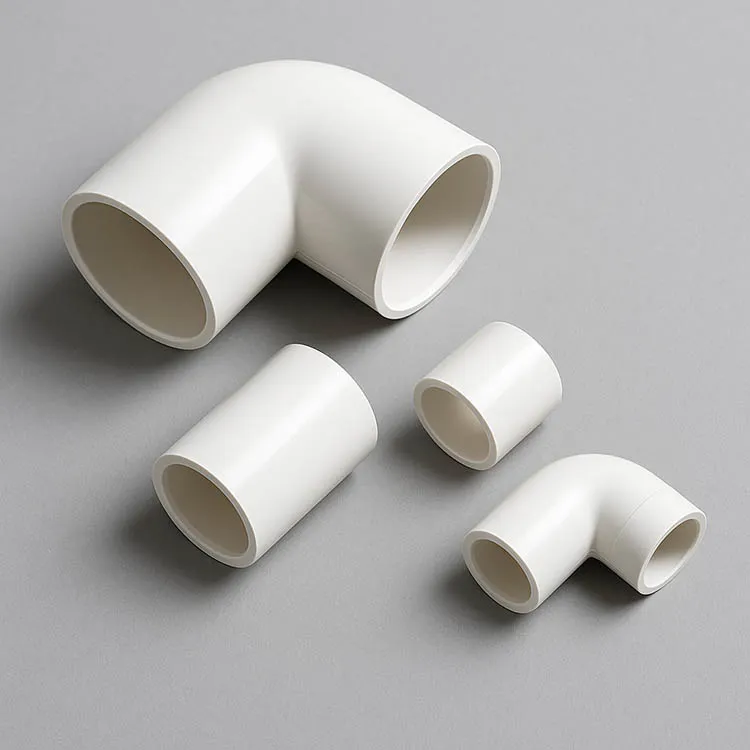What is plastic pipe?
Now with the continuous development of our city, the world under our feet is gradually changing. Now our feet are almost covered with pipes all the time, so Pipelines are now very important to people's quality of life. There are many kinds of pipe materials, and different materials also have different applicable occasions and advantages. Now the most common ones on the market are all kinds of plastic pipes.
Plastic pipe is a general term for pipes made of plastic materials. Plastic pipes are one of the most common chemical building materials we have now. Plastic pipes have the characteristics of light weight, hygienic safety, small water flow resistance, energy saving, metal saving, improving living environment, long service life, safety and convenience, etc. It has won the love and recommendation of consumers with its superior performance and very high cost performance. Now, we will tell you about six common plastic pipes.

Types of plastic pipes
1. Rigid PVC plastic pipe, commonly known as UPVC pipe. It is light in weight, low in strength, has good self-extinguishing performance and good chemical stability, and can be used for drainage, sewage, ventilation, etc.
2. Polyethylene pipe, commonly known as PE pipe. According to the different density of pipes, polyethylene pipes can also be divided into high-density polyethylene, medium-density polyethylene pipes and low-density polyethylene pipes. High-density has high strength and good heat resistance, and is mostly used in urban pipeline construction. Its strength and rigidity are in the middle position, but it is very soft and has good creep resistance; its low-density softness, elongation has certain advantages, and its impact resistance, chemical stability and high-frequency insulation performance is excellent, can be used for rural irrigation, power, cable communication, etc.
3. Cross-linked polyethylene pipe, commonly known as PE-X pipe. It has good memory, environmental protection, chemical properties, corrosion resistance, high temperature resistance, and can be used for the supply of cooling and heating systems in buildings, such as heating pipes, central air conditioning pipes, hot water supply pipes, etc. It can also be used in the food industry as a food delivery pipeline.
4. Random copolymer polypropylene pipe, commonly known as PP-R pipe. It is non-toxic, tasteless, and especially hygienic. With good heat resistance and antifreeze properties, it is an ideal material for hot and cold water pipes. This material is mainly used for migrant workers or industrial cold water systems, beverage transportation systems, hot water heating systems, and so on.
5. Polybutene pipe, commonly known as PB pipe. It has high strength, good creep resistance, and is easy to install and operate. On the other hand, it is expensive, has a small diameter, and is easily eroded by certain aromatic hydrocarbons and chlorinated solvents, so the scope of use is somewhat contraindicated.
6. Acrylonitrile-butadiene-styrene pipe, commonly known as ABS pipe. It has good heat resistance, corrosion resistance, creep resistance, and is non-toxic, tasteless, hygienic and clean, but has poor heat transfer performance and is not suitable for places exposed to sunlight. In foreign countries, it is generally used for sewage, irrigation, underground conduction, etc.; in China, it is generally used for indoor water supply, transportation of corrosive media, etc.
Dimensions of plastic pipes
The dimensions of plastic pipes are generally expressed in terms of outer diameter. Such as PPR tube: De63.
Service life of plastic pipes
The service life of plastic pipes is determined by the method of GB/T18252-2018 "Plastic piping systems - Determination of long-term hydrostatic strength of thermoplastic pipes by extrapolation". This is a method of statistically extrapolating and predicting the long-term strength properties of thermoplastic materials or articles from the results of hydrostatic strength tests of pipes. Most of the international use this method to calculate, under the temperature of 20 ℃, the plastic pipe is generally 50 years of life.
Molding equipment for plastic pipes
The molding equipment for plastic pipes is an injection molding machine, which is molded into pipes by a professional injection molding machine.
How to connect plastic pipes
There are generally two ways to connect plastic pipes: hot melt and glue.
Advantages of plastic pipes
1. It can be bent naturally or has cold bending performance, and the coil supply method can be used to reduce the number of pipe joints.
2. Good hydraulic performance, smooth inner wall of the pipe, small resistance coefficient, not easy to foul, the flow area in the pipe does not change with time, and the probability of pipe blockage is small.
3. Compared with metal pipes, the density is small, the material is light, the transportation and installation are convenient, flexible, simple and easy to maintain.
4. Good chemical stability, not affected by environmental factors and medium components in the pipeline, and good corrosion resistance.
5. Small thermal conductivity, low thermal conductivity, good thermal insulation and energy saving effect.
Disadvantages of plastic pipes
1. Poor mechanical properties, poor impact resistance, poor rigidity, and poor straightness, so the density of pipe clamps and hangers is high.
2. Poor flame retardancy, most plastic products are flammable and thermally decomposed when burning, releasing toxic gases and fumes.
3. The thermal expansion coefficient is large, and the expansion and contraction compensation must be emphasized.

Application prospects of plastic pipes
With the improvement of people's living standards, environmental awareness and attention to health, a green revolution in the building materials industry has been launched in the field of water supply and drainage.
After the cold galvanized steel pipe is used, the general service life is less than 5 years, and the rust is rusted, and the iron smell is serious. Residents complained to government departments one after another, causing a social problem. Compared with traditional metal pipes, plastic pipes have the characteristics of light weight, corrosion resistance, high compressive strength, hygiene and safety, low water flow resistance, energy saving, metal saving, improving living environment, long service life, and convenient installation. It is favored by the engineering community and occupies a very important position, forming an irresistible development trend.
Different from plastics and traditional materials, the pace of technological progress is faster, and the continuous emergence of new technologies, new materials and new processes makes the advantages of plastic pipes more and more prominent over traditional materials.
Compared with traditional metal pipes and cement pipes, plastic pipes are light in weight, generally only 1/6-1/10 of metal pipes, and have better corrosion resistance, impact resistance and tensile strength, and the inner surface ratio of plastic pipes is relatively low. The cast iron pipe is more smooth, the friction coefficient is small, the fluid resistance is small, the energy consumption of water delivery can be reduced by more than 5%, and the comprehensive energy saving is good;
The manufacturing energy consumption is reduced by 75%, the transportation is convenient, the installation is simple, and the service life is as long as 30-50 years. Polyethylene pipes are developing rapidly in countries all over the world, and developed countries have an absolute advantage in the application of polyethylene pipes in water supply and gas fields.
Polyethylene pipes are not only widely used to replace traditional steel pipes, cast iron pipes, etc., but also replace polyvinyl chloride pipes. The reason lies in the technological innovation of polyethylene pipes. On the one hand, the material has made great progress. Through the improvement of the polyethylene polymerization production process, the strength of the special material for polyethylene pipe has almost doubled.
On the other hand, there are new developments in application technology. For example, the technology of laying polyethylene pipes by directional drilling without digging trenches has given full play to the advantages of polyethylene pipes, making traditional pipes fundamentally suitable for this method. There is no competitiveness.
There are still many new materials and technologies being researched, or have been researched and are being tested. It is certain that the technological progress of plastic pipes in the next 10 years will promote the development of plastic pipes more rapidly and wider.





939.webp)


294.webp)
476.webp)
420.webp)
146.webp)
460.webp)
287.webp)
274.webp)
688.webp)


